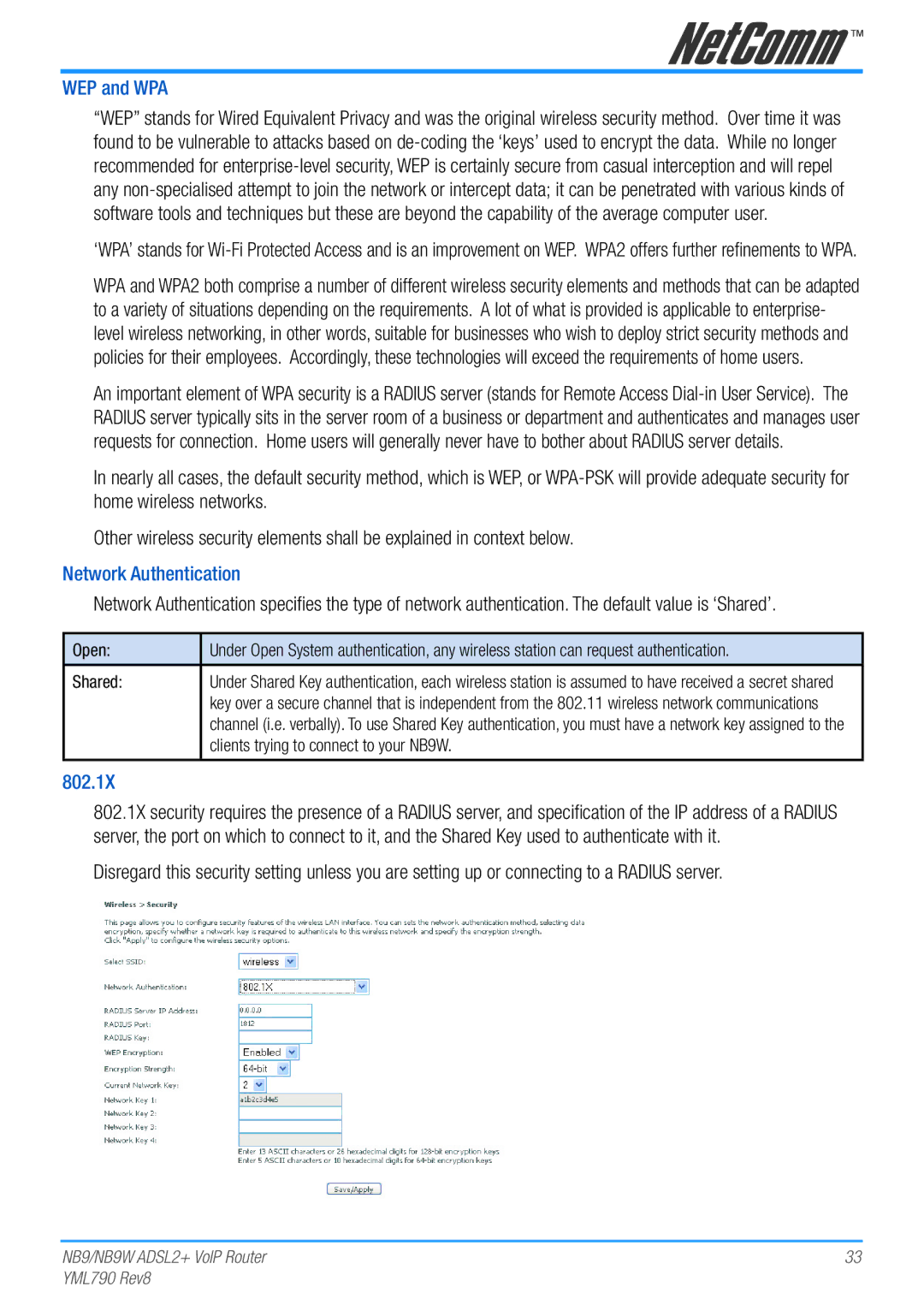
WEP and WPA
“WEP” stands for Wired Equivalent Privacy and was the original wireless security method. Over time it was found to be vulnerable to attacks based on
‘WPA’ stands for
WPA and WPA2 both comprise a number of different wireless security elements and methods that can be adapted to a variety of situations depending on the requirements. A lot of what is provided is applicable to enterprise- level wireless networking, in other words, suitable for businesses who wish to deploy strict security methods and policies for their employees. Accordingly, these technologies will exceed the requirements of home users.
An important element of WPA security is a RADIUS server (stands for Remote Access
In nearly all cases, the default security method, which is WEP, or
Other wireless security elements shall be explained in context below.
Network Authentication
Network Authentication specifies the type of network authentication. The default value is ‘Shared’.
Open: | Under Open System authentication, any wireless station can request authentication. |
|
|
Shared: | Under Shared Key authentication, each wireless station is assumed to have received a secret shared |
| key over a secure channel that is independent from the 802.11 wireless network communications |
| channel (i.e. verbally). To use Shared Key authentication, you must have a network key assigned to the |
| clients trying to connect to your NB9W. |
|
|
802.1X
802.1X security requires the presence of a RADIUS server, and specification of the IP address of a RADIUS server, the port on which to connect to it, and the Shared Key used to authenticate with it.
Disregard this security setting unless you are setting up or connecting to a RADIUS server.
NB9/NB9W ADSL2+ VoIP Router | 33 |
YML790 Rev8 |
|
